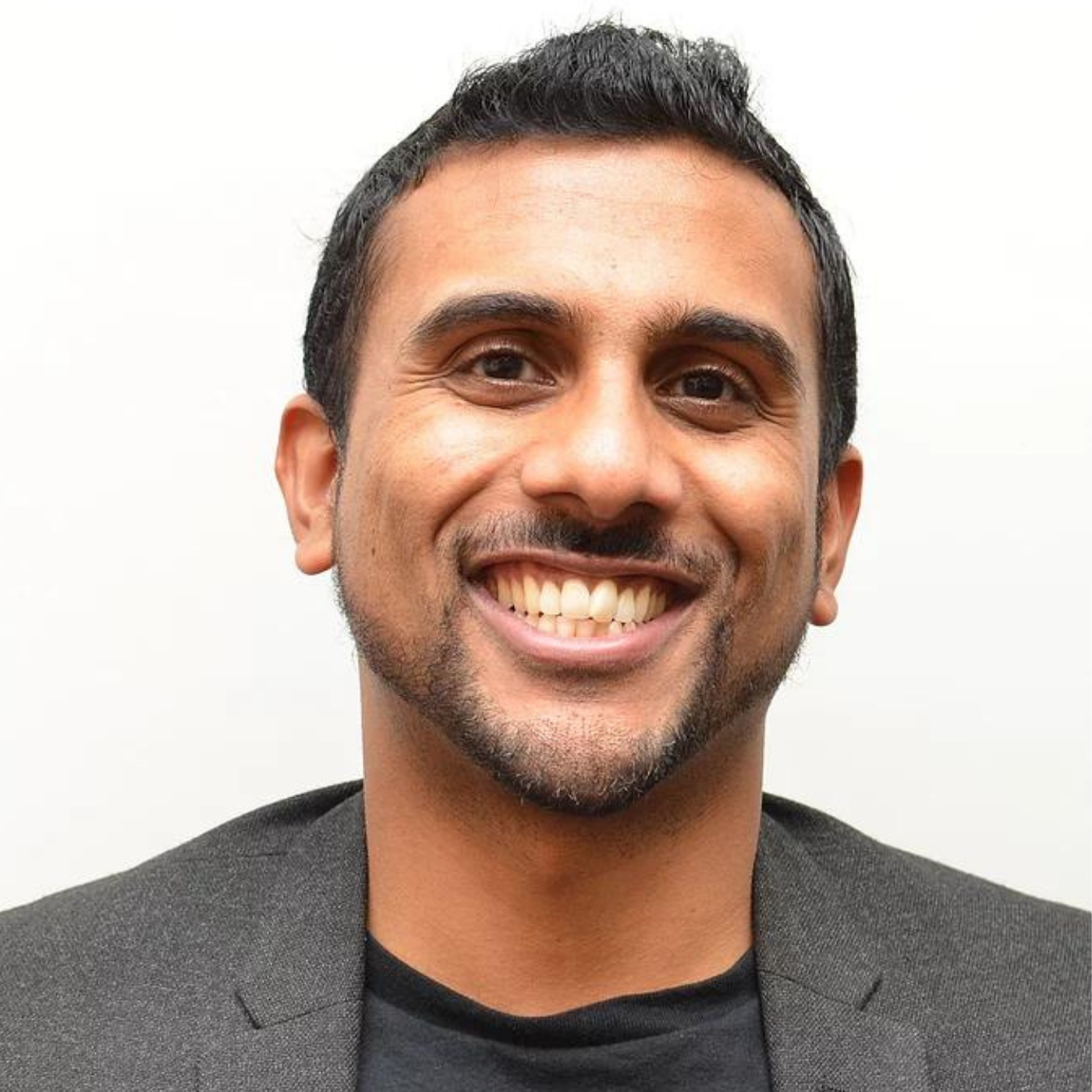Listen on:
Table of Contents:
Problem: How do you build a high-performance SaaS team?
Research from MIT has found that communication is the most important factor for remote teams’ success. Communication frequency and consistency are crucial for preventing employees from feeling disconnected from leadership and co-workers. How teams succeed and why teams perform well is a result of many factors. Many moving parts and new work setups make it more challenging for SaaS companies to reach milestones and roll out new features. Despite vaccinations and the opening of offices, more than 30% of the workforce will still work remotely. The end of 2021 approaches and these hybrid work setups prompts the question: how do we build a high-performance SaaS team?
In the hyper-competitive SaaS market, it’s very hard to get people motivated and super excited about a SaaS tool. More often than not, a great leader is able to imbue just a run of the mill, maybe a very technical SaaS tool with a larger purpose. That’s so important.
Anchor on the Vision and Purpose
Leadership teams and salespeople are often driven by fear. The need to please customers and add features they want often requires time from the team. The focus is then shifted to pursuing projects that slow down the aspects of product development that are actually aligned with the vision. The result is a downward spiral and a lack of motivation since the team is working on something that is not aligned with the company’s core purpose. This is when a clear sense of purpose and vision helps the team stay focused on what matters most.
So the CEO or the person in charge will set the mission. But, you want people reacting to it and investing in it. And be like, ‘I like this’, or ‘Can we try this?’. And then the team forges that mission together. So, when the team forges that, then it becomes good. One of the best ways to do that, especially in a very technical SaaS-driven environment, is to come up with a good story. What is the best ideal work story for our team or company? Airbnb does this really well. They’re constantly storifying their entire user process. And so people do that for products and features, but you’ve got to start that from the top. Like the team should have a story about itself. When you have a good story, and you can iron out and say, ‘This is what we focus on. This is who we help. And this is the impact of what we do.
Step # 1: Start with a Purpose
Nikhil emphasized that purpose is the foundation of everything you will do and every decision you will make as a team. It’s the north star of all your projects and milestones. Without a shared purpose, there is no shared mission. There is no team. You are just a bunch of people working together to push out a product. And this does not inspire performance. Rally your team and your troops together. Get the people on your team motivated about a larger-than-life mission to give meaning to what they do.
And the first part starts with purpose. And I know a lot of people know about it and people talk about it. But if you think about it, purpose is actually what really builds a team. Otherwise, you can bring together a group of people and say, ‘Okay, this is a product, what we’re shipping, and we’re pushing’. But you really need to connect to a purpose.
Step #2: Focus on the Mission
After setting your team’s purpose, create an operative mission, specific tasks your team can complete. You can make a distinction between vision and mission by remembering the latter is more operational. You can think of your vision as the ideal version of what you want to become. They are both equally important. According to the theory of intentional change, you need a compelling vision. The mission is the operational aspect of the vision. Nikhil outlines three things you can do to help you focus on your mission:
- Build a culture of trust. Allow people to speak their minds and critique the ideas, including those that come from the leadership team. Just make sure that these debates are healthy and constructive.
- Set boundaries. Learn when to say no to an idea, even if it comes from the CEO. Debate and question every idea. Ask yourselves if these ideas help you to achieve the mission at hand.
- Create a rigorous process to vet ideas that get to the top. How do you trim down your projects to ones that will help move your team forward?
The best ideas come from the strongest, greatest, debates. Ideas isolated can lead to products like the Microsoft Zune. You’ve got to have good constructive debates because if they feel like they can challenge the CEO with anything, then there’s a level of trust there. Just because I wasn’t hurt, ultimately the team went the other way. It doesn’t matter because this team is all about challenging people and vetting the best ideas. And getting only what matters to the mission to rise to the top.
Step # 3: Break the Mission into Smaller Pieces
Challenge yourself to perform well. Ensure that you have a short-term and long-term perspective. When you take a short-term view, you can be more intentional in your actions. Setting smaller missions and milestones allows you to encourage the team to become ambitious enough to push and test ideas. You can prove that you can achieve your goal by taking these small steps.
The next thing is you should say, what is our intention in the short term? Basically, it’s called a performance challenge. So let’s say your goal this quarter for our CRM tool is to get it out into the hands of the top five companies out there. That’s a very intentional goal. And from that goal, you will say, ‘Okay, we need to measure the effort we’re putting in. And also what does success look like?’ You have to be clear about both parts.
Step # 4: Allow Room for Errors
Make it a point to identify where the team makes mistakes. This helps you learn. To succeed, make sure you normalize reporting of errors and set up a culture when one doesn’t get penalized by reporting a mistake. Instead, encourage the team to solve roadblocks together. To do this, Nikhil shares some of the best practices they’ve experienced on their team:
- Regularly ask what you can work on to improve the workflow.
- Don’t improve on everything at once.
- Choose focus areas to improve on.
- Take on new items to work on once you’ve seen progress on the first set of priority improvements.
- Challenge yourself and tighten areas for execution.
One of the things I love about what you did, especially with that error log, you’re basically operationalizing making mistakes. You’re making it similar to development teams looking at their error logs and saying, ‘Okay, what do we need to fix?’ Have that retrofit. I love that because it takes the shame out of the individual and makes it an operating procedure. It shouldn’t be like one brave person has to come out and say something. It should just be, ‘All right. What can we work on? What’s the next best thing we can work on?’ And then it becomes this exercise where everyone’s just trying to just better themselves, without any shame”
Handling Difficult Conversations
There will be times when things won’t go smoothly. Leaders should be prepared to have difficult conversations when mistakes occur. It is important to have difficult conversations because they facilitate trust and create a safe environment for discussing challenging ideas. To do this, you must:
- Put aside your ego. Focus on the outcome you want from the conversation.
- Do a self-check-in. Are you prepared to have that conversation? Ensure you’re in a good emotional state before you begin.
- Allow them to speak. Empathize with their difficulties. Listen to what they have to say and acknowledge their concerns.
- Come up with a solution together. Identify specific action items that you both need to take to resolve the issue, and ask them what kind of help they need.
- Commit to never repeat the same mistake. When you do this, you acknowledge what went wrong and agree to prevent it from happening again.
First, before you have a difficult conversation, press. You’ve got to press. Especially when it’s a difficult conversation, there’s a lot of emotions there. The first thing they do is they first figure out, ‘Okay, what is the outcome I want from this conversation? Do I want this person doing this action? Or do I just want to feel better about myself that I shouted at this person, right?’ You want to put aside the ego and be like, ‘what is the outcome here?’ And then second, you also want to check in with yourself. Are you in a good space to have a conversation? If you are having difficult conversations at the end of a long, stressful day, that’s a no-go. So, that’s the first part, prep yourself and make sure you know what’s my goal from this conversation and make sure in a good state. Then, once you’re having that conversation, dive deep, dive fast, and dive deep. Just let them talk and empathize. Try to get into their shoes. Like you’re trying to get to the room of the issue. Sympathize and empathize and make them completely feel, seen, and heard. Understand the root of the problem. Then the third part is problem-solve together. Once you’ve made that person feel seen, then look at that issue as a separate entity. Help them do it. So, they don’t feel like they’re being attacked. And once you do that, end that conversation with a commitment and say, ‘Okay, from now on, whenever you have two or three more issues than you can handle, you let me know, and I’ll take one off the plate.’
How should the team look at challenges?
(00:28:17) “But what we noticed is any client that really thinks about it profoundly and maybe do some pre-planning, we’re seeing them be able to keep another 15 to 20% of their profit back in their pocket. But for someone who is working so hard doing e-commerce, I think that’s a pretty big deal to add to the bottom line to the margins.”
Nikhil Paul Recommends the Following Books
- The Five Dysfunctions of a Team: A Leadership Fable, by Patrick Leoncioni
- Good to Great: Why Some Companies Make the Leap and Others Don’t, by Jim Collins
- Collaborative Intelligence: Using Teams to Solve Hard Problems, by Richard Hackman
This interview is part of the How We Solve podcast. To hear more from industry experts who are solving everyday business problems, check us out on Spotify, Apple Podcasts, and on our website.
About the guest

Nikhil Paul
Nikhil is the founder of We R Human. He helps tech leadership teams gain clarity through workshops and coaching programs. His goal is to guide high-growth teams and companies to strengthen their focus, culture, and execution.
How people can people reach the guest:
Official Website: We R Human Website
Twitter: @nikhiljpaul
LinkedIn: Nikhil Paul
Listen on:
